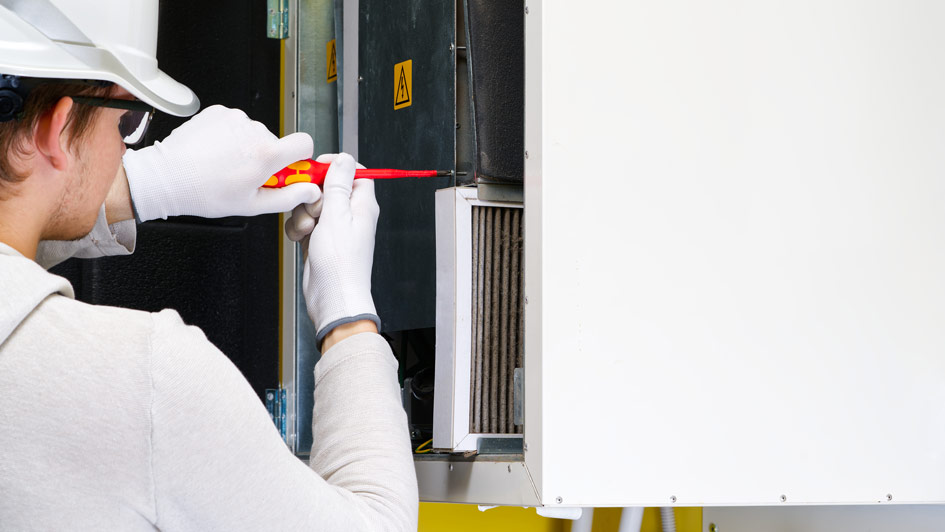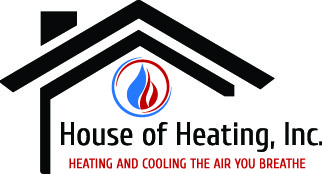
Whether it’s a leaky furnace or if you flick the switch to power up your heating system when the weather gets cold and it won’t start, common furnace problems can impact your home at any moment.
Regardless of the issue, knowing how your heating system works and a little bit about some frequent furnace problems is crucial in deciding whether you can troubleshoot on your own or if you need professional support. By noting the furnace's behavior, listening for peculiar noises and checking for signs of damage or blockage, you can narrow down the possible causes.
If you're not sure about the problem or lack the necessary skills and tools, it's best to call a professional HVAC company like House of Heating Incorporated. We can accurately pinpoint the issue and complete the required repairs or maintenance, so we can get your furnace up and running ASAP.
Here's more about what causes a furnace to leak water and eight other common heating dilemmas:
1. Your Furnace Leaks Water
A furnace can leak water for several reasons. One possibility is a condensate leak, where the water created during the combustion process is not properly draining away. This could be due to a plugged condensate drain line or a malfunctioning condensate pump. Another possible cause of water leakage from a furnace is a cracked heat exchanger, which can be responsible for water—as well as dangerous gases—leaking out of the furnace.
It is important to deal with water leaks quickly to prevent further damage to your furnace. Consulting with a professional HVAC technician like the crew at House of Heating Incorporated is recommended to diagnose and resolve the issue effectively.
2. My Furnace Blows Cold Air/Lack of Heat
Some likely causes for a furnace blowing cold air or not blowing hot air include a malfunctioning thermostat, a problem with the pilot light or ignition system, a plugged air filter, or a malfunctioning heating element. It is also possible your furnace is overheating and shutting off as a safety precaution.
If your furnace won’t blow hot air, it's best to contact a skilled HVAC specialist to diagnose and fix the problem. They can give an accurate assessment and suggest the appropriate solution.
3. My Furnace Struggles to Keep Up
A widespread reason your furnace isn’t keeping up on a cold day is that your home lacks insulation, which can result in heat loss and reduced efficiency. Another reason your furnace is falling short is because it’s not big enough for your home, so it can’t produce enough heat to effectively warm the space. A defective thermostat or ductwork problems can also result in inconsistent heating.
To handle this, first check your home’s insulation level and make sure it’s enough to insulate your home. Also, examine the thermostat to make sure it’s set right and the batteries are working.
If the problem won’t go away, consider contacting an experienced HVAC company, such as House of Heating Incorporated, who can assess your system, determine the root cause and provide solutions such as furnace replacement, repairing ductwork or changing your thermostat settings.
4. My Furnace Won't Work
If your furnace is not working, there are some steps you can take to troubleshoot before phoning a heating specialist. Ensure the thermostat is set right and the batteries are fresh. If the furnace still doesn't start, check the circuit breaker or fuse box to verify power is reaching the furnace.
If there is power but your furnace won't ignite, the problem may rest with the ignition system or gas supply. In that case, it's a good idea to consult a seasoned HVAC professional for diagnosis and repair.
5. My Furnace Is Short Cycling
If your furnace is short cycling, that means it is turning on and off often at short intervals rather than running in regular cycles like it should. This can cause inefficiency, increased energy consumption and potential damage to your heating system.
If you think your furnace is short cycling, the first step is to pull out your unit’s air filter. Filters should be changed regularly to ensure air flow, so if your furnace air filter is dirty you should exchange it for a clean one—and ensure it is pointing in the right direction. If that doesn’t do the trick, check your thermostat and look to see if it’s set right and the batteries are good.
If those two things don’t work, it’s best to call experts like the team at House of Heating Incorporated. Immediate professional attention will help restore the proper functioning of your furnace and reduce the chance of further complications and high energy bills.
6. My Furnace Won't Stop Humming
Whenever your furnace is making a humming noise, it often is a symptom of a malfunction with the electrical elements or the blower motor. For this reason, if you notice your furnace making a humming noise, it is critical to take action.
If the noise doesn't go away, it is better that you employ a professional HVAC technician.
7. My Furnace Makes Loud Noises
If your furnace is emitting a consistent loud noise, it's important to address the issue promptly to prevent further damage or potential safety concerns. One common reason is a malfunctioning blower motor or fan, which can create a grinding or screeching sound. Another possible cause is a loose or worn-out belt that may produce a squealing or rattling noise.
Due to the complexity of furnace systems and potential risks involved, it's safer to get in touch with a heating and cooling specialist.
8. My Furnace Is Not Turning On
If your furnace won't turn on, make sure the thermostat is set to the right temperature, is in heating mode and the batteries are good. Then, check if the circuit breaker or fuse that controls the furnace is sending power to the unit. If these basic checks don't take care of the problem, you can examine the furnace's power switch or emergency shutoff switch to make sure they're in the "on" position and weren’t accidentally turned off.
If those steps don’t work, call an expert for furnace repair.
9. My Furnace Is Not Igniting
Like a a furnace not turning on at all, a furnace that isn’t igniting can be caused by a dirty air filter or a tripped circuit breaker. So, examining the air filter and assessing your circuit breakers are a good place to start.
Other common causes of a furnace not igniting include a faulty igniter or faulty flame sensor. Symptoms of these include the furnace continually trying to ignite without success, a lack of heat production or the furnace is making a burning or gas smell. Both of these issues can be simply addressed by HVAC pros like the team at House of Heating Incorporated.
